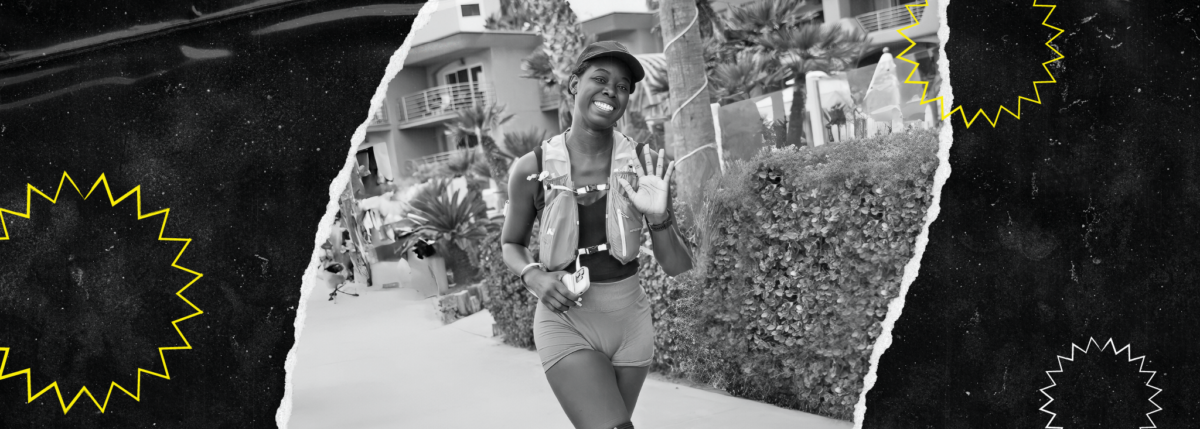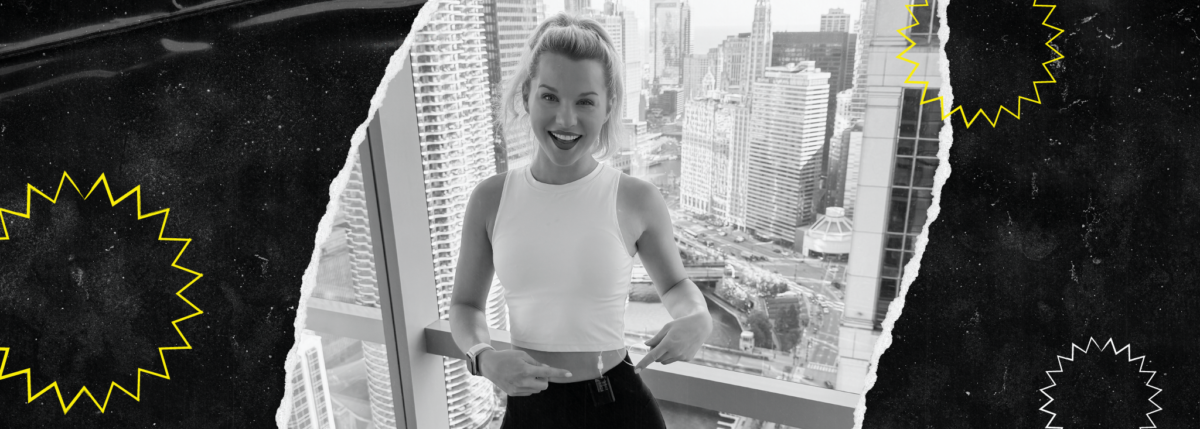Strength Is Accepting Help for Chronic Anxiety
Written by: Kaylin Hunter
4 minute read
September 15, 2017
Kaylin Hunter used to think being strong meant refusing a life jacket and fighting the anxiety of managing a chronic condition and never asking for help. Today, she defines strength as being able to recognize when you need help.
I jolt awake. Where am I? What time is it? What’s my blood sugar? My head races. My heart pounds. My chest tightens. I feel the nausea building in my throat and tears rolling down my cheeks. I can hardly breathe. I throw my pillows toward the ground, angry that I sleep with so many in the first place.

I frantically search for my Dexcom receiver that’s never more than a foot away. I reach for the light on my nightstand and find the number I’m so desperately seeking. 136 with a steady arrow. I take a breath. I’m okay. I repeat to myself, I’m okay. But I don’t feel okay. It’s 5:05 a.m., and while the rest of the world is dreaming, I fight the urge to rejoin them for fear that I’ll again jerk awake or that I won’t wake up at all. I sit upright and sob into my bent knees, waiting for the time to pass and wishing hopelessly that it would take this disease with it.
It’s 7:00 a.m. I wash my face with cold water and cover the dark circles that have taken place under my eyes with two layers of corrective concealer to mask the effect. Exhausted would be an understatement. It’s been seven years since I’ve been forced into the insulin-dependent world, one which no person seems to understand unless they live there too. My memory is jam packed with ever-changing nutritional information, carbohydrate counts, ratios, glycemic indexes and digestion rates. My mind constantly turns, striving to find the perfect algorithm of a working pancreas. My fingertips are callused, bruised and pained from tiny pokes that reveal my blood sugar levels. And dark purple injection bruises cover my torso from left to right. People often say they could never do what is required of a person with type 1 diabetes. They either fear needles, blood or both. But what they seem to forget is that someone with type 1 diabetes (T1D) doesn’t have a choice.
Ever since leaving the hospital, a week after my diagnosis, I have always managed my diabetes on my own. I hardly understood the idea of distributing the weight among others. This diagnosis was mine, and I would bear the weight of it on my own shoulders. The weight I carried was heavy that evening when I was 13 and skipped dinner to avoid being poked.
I sobbed staring at my plate, knowing I couldn’t touch it without a syringe first piercing my skin. It was heavy when strangers assumed my disease was both self-inflicted and reversible, failing to recognize that I would do anything to rid my life of this scourge. I felt the weight of my disease as I screamed for the phlebotomist to leave my blood inside my veins where it belonged and felt it again when I came to the conclusion that they would continue to take it every three months for the rest of my life.
I felt the pressure when I was 15 and my friends begged me not to do another injection in front of them. It was heavier the night I woke up sweaty, paralyzed and pasted to my bed sheets, knowing very well my body was in desperate need of sugar, but still persuaded by the intensity to stay still, close my eyes and consider drifting from the only thing securing me to this earth. I can no longer count the number of times I’ve been moments away from death nor can I count the number of times I’ve been lucky enough to wake. The idea of doing this for another seven years tortured me because I knew I couldn’t do it by myself.

I dragged what was left of me to the bedroom across from mine, where I knew I’d find my mom asleep. I held my breath as I stood in her doorway wondering what good it would do to wake her. After all, she couldn’t take this away from me and I knew that very well.
While my brain contemplated the logistics, my body continued to make its way towards her. It was only a matter of seconds before I collapsed beside her, waking her with a cry that would break any mother’s heart. The room quickly filled with heartache, guilt and fear. But among the grief, there was a sense of relief as the last seven years came crashing down beside me. For once, I felt light. I felt like I could finally breathe.
I dreaded the coming days. I was terrified that nothing had really changed. But to my surprise everything did. This was my new beginning, and together we slowly began picking up the pieces I had lost over the years. We connected my Dexcom graph to her phone, and she took on the responsibility of checking my numbers throughout the night, allowing me to sleep. And really sleep. The next morning, I met with my doctor. I sat in her office so ashamed that I had broken down after coming this far. On paper, my diabetes management was picture perfect—every three months my lab work proved to be excellent, my eyesight was intact, and my A1c was a 5.5—but in person, there was no hiding that the stress of managing a disease as demanding as type 1 had gotten the best of me.
My doctor finally spoke up, “Just by looking at you, I can see that there’s a battle inside you. I can tell you want to live, but you are so scared to die.” She diagnosed me with a chronic anxiety disorder caused by the stress of managing this disease. I had always known that anxiety was more prevalent in people with T1D, but I didn’t want to be part of those statistics. Getting prescribed medicine felt like such a loss. Still, I took them every night, and every morning was a little bit better.
I used to think being strong meant refusing a life vest and fighting the current, but I now define strength as recognizing the need for help and accepting it. The emotional, mental and physical burden of living with a chronic illness is too big to be endured by one person alone. In fact, the beauty of this disease is the community and support that accompany it. With the support of my mom, my doctor and the type 1 community, I’m able to live again. And really live.
 Want to be a part of something big? Join Beyond Type 1 and see how you can change what it means to live with this chronic illness.
Want to be a part of something big? Join Beyond Type 1 and see how you can change what it means to live with this chronic illness.

Author
Kaylin Hunter
Kaylin Hunter is 21 years old. She was diagnosed with type 1 diabetes (T1D) when she was 13. In the hospital, she was in diabetic ketoacidosis (DKA) and was told if she wasn't being treated she likely wouldn't have survived another week. She's a writer, a coffee drinker, a fashion enthusiast (though it may not look like it), an indoor cycler, a college student and a mom to an apricot golden doodle named Mia, who doubles as her diabetic alert dog.
Related Resources

Danica Collins not only prepared for one of the most challenging physical events of her...
Read more

Beyond Type 1 is spotlighting inspiring athletes with type 1 diabetes as they prepare for...
Read more

On November 3, 2024, Taylor Rindfleisch of Chicago laced up her running shoes for the...
Read more

